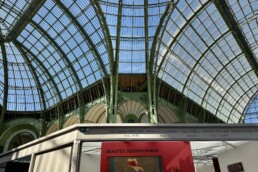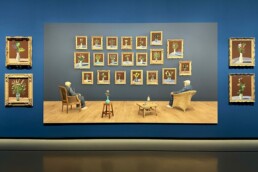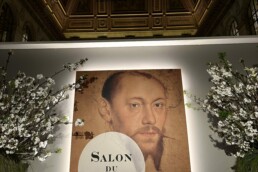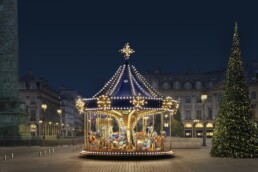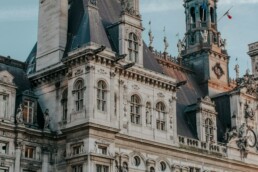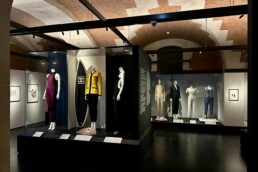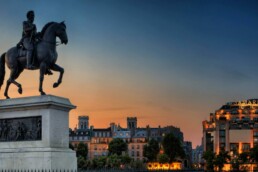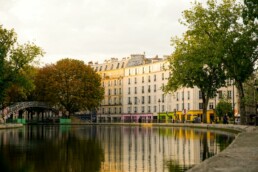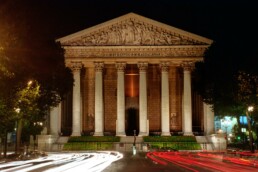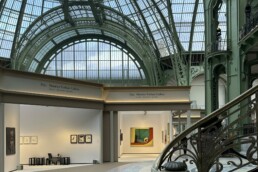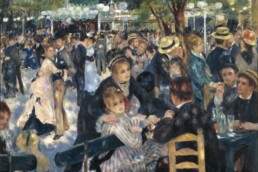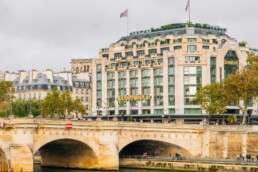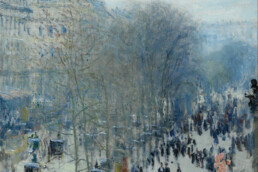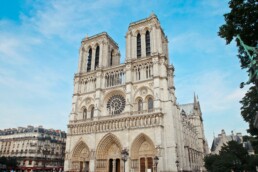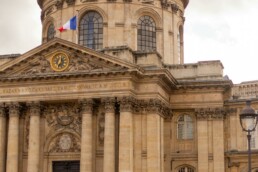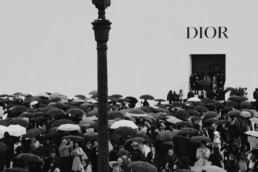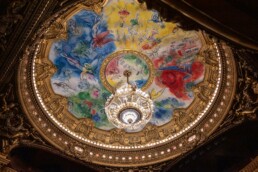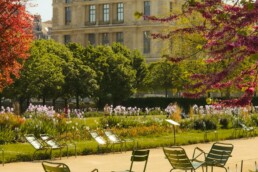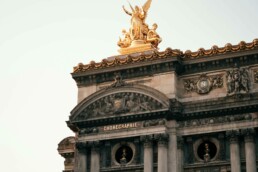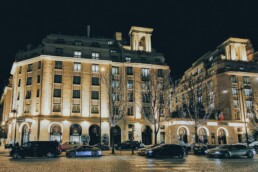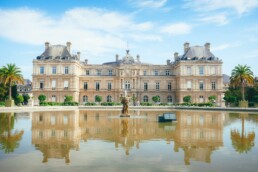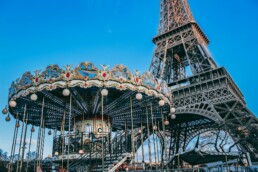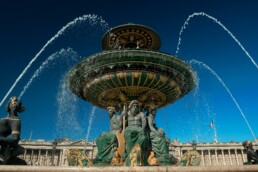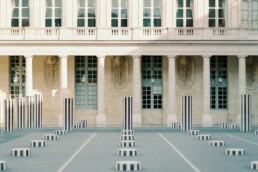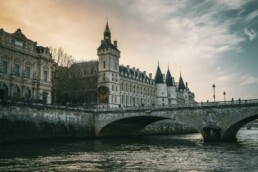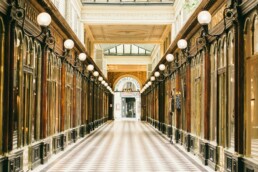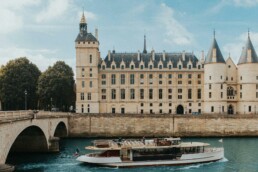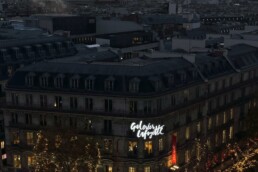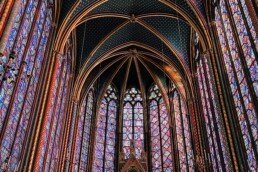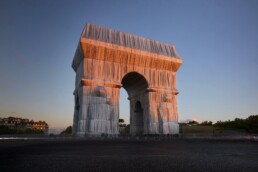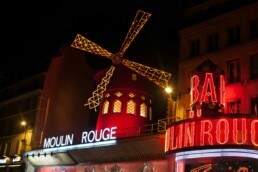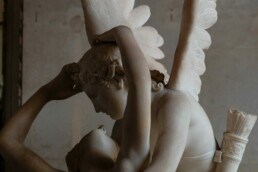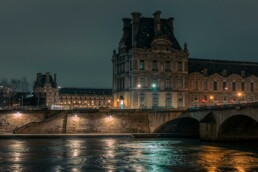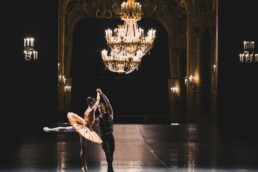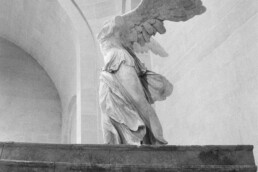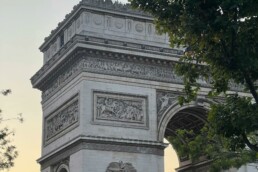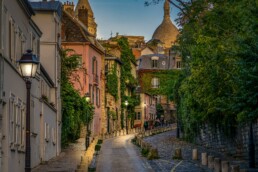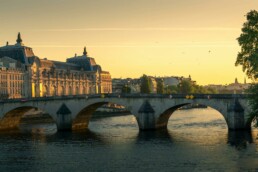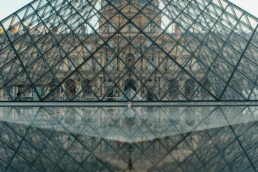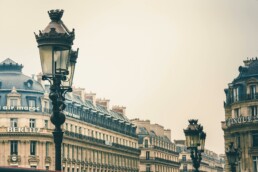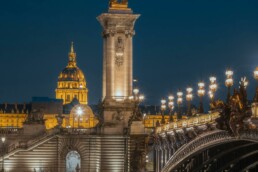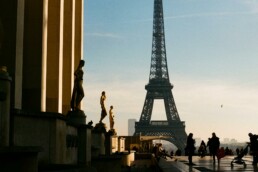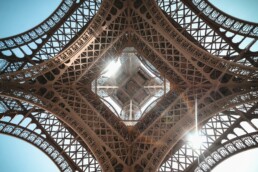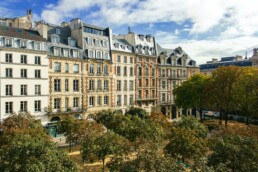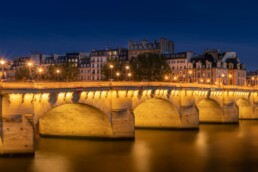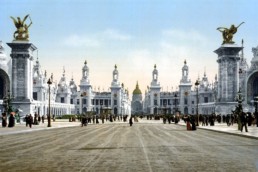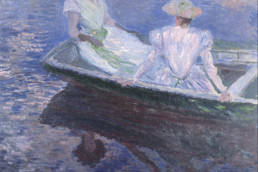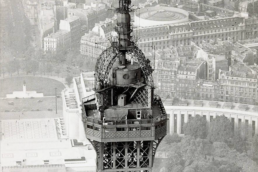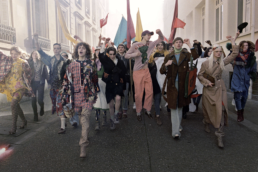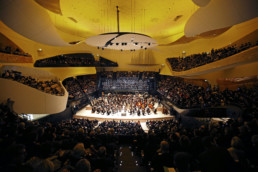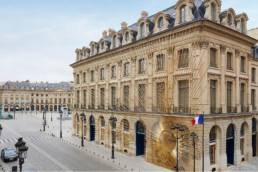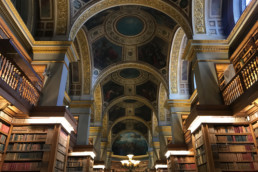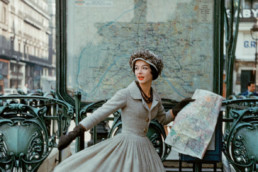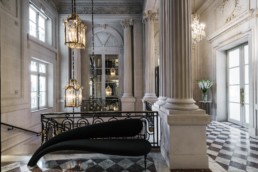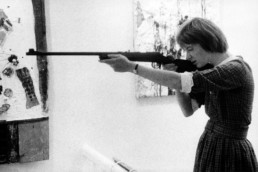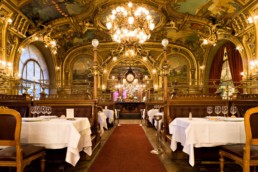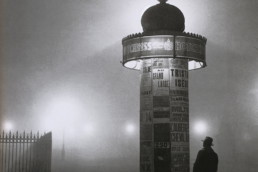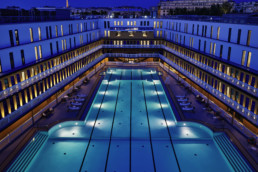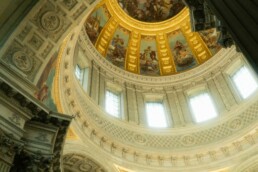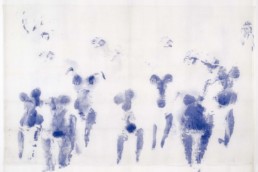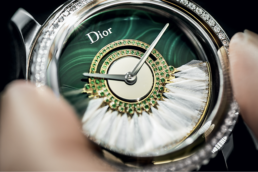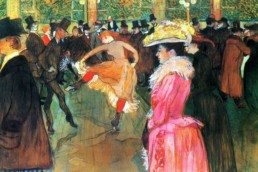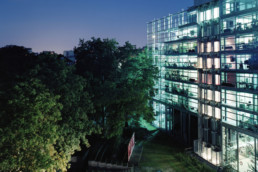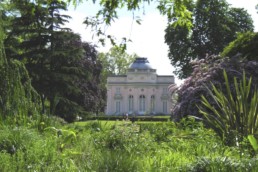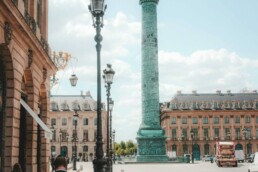The Opéra Garnier, that monument of stone and marble, rises with imposing majesty in the heart of Paris, like a crystallized dream of the Belle Époque. It is a place where history, art, and architecture meet in sublime harmony, a sanctuary where human passions come to life under gilded moldings and frescoes.
The construction of this temple of lyrical art was decided by Napoleon III in 1860, as part of the transformation of Paris led by Baron Haussmann. Charles Garnier, a young and talented architect, was chosen among hundreds of candidates to carry out this monumental work. When the work began in 1861, no one imagined that this project, marked by its ups and downs, would become one of the most emblematic symbols of the French capital.
I recall my childhood strolls, nose pressed against the gates, dazzled by the magnificence of this richly adorned facade. The Corinthian columns, the allegorical statues, everything here invites contemplation. Each detail is an ode to grandeur, each sculpture a celebration of art at its noblest. I lost myself in the meanders of my daydreams, imagining the sumptuous evenings where ladies in opulent gowns and gentlemen in tailcoats thronged under the light of glittering chandeliers.
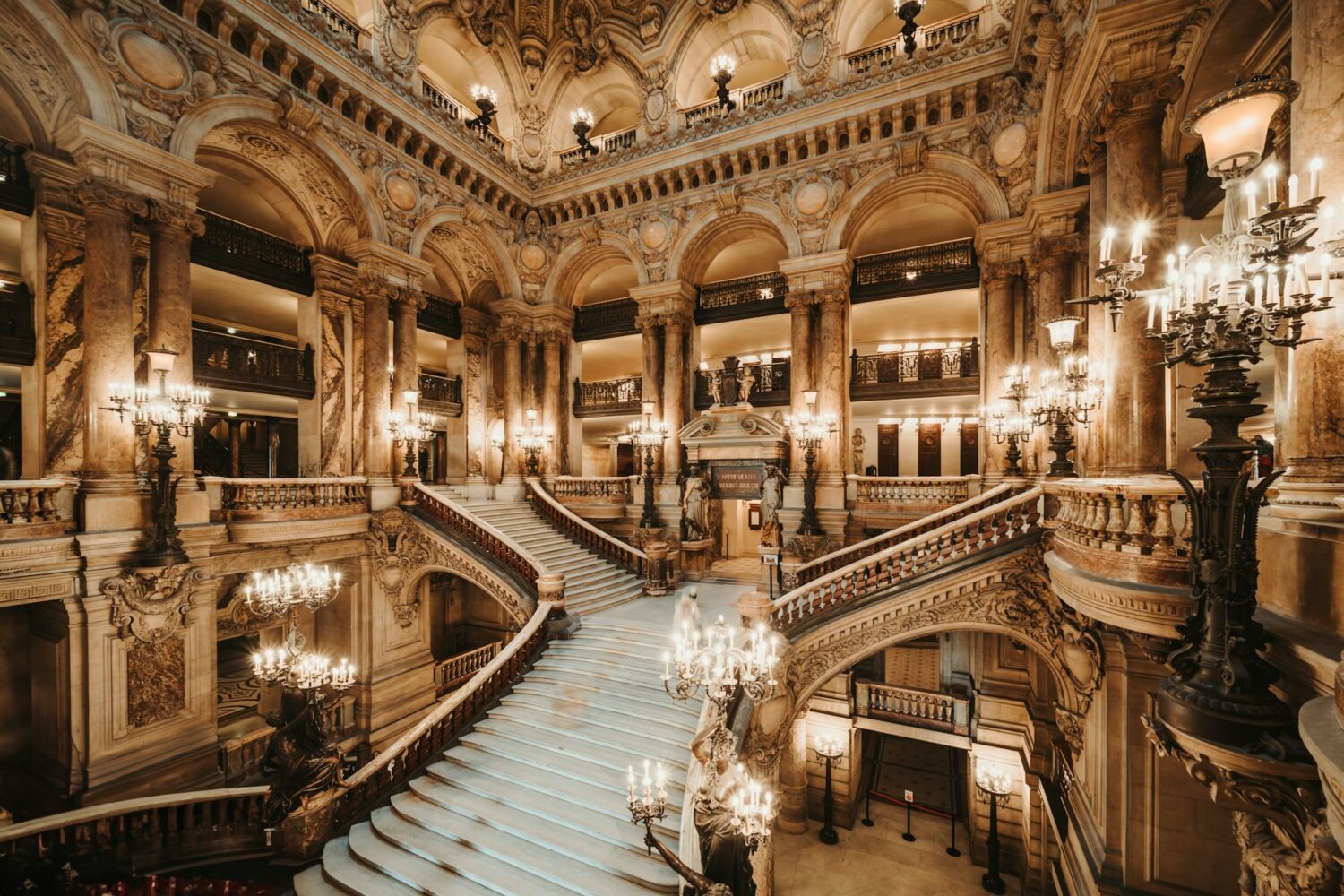
The interior of the Opéra Garnier itself is a veritable palace of wonders. The grand marble staircase, with its two majestic flights, is an invitation to grandeur. The richly decorated foyers, the salons gilded with fine gold, all recount the story of an era where splendor and elegance reigned supreme. The dome, painted by Marc Chagall in 1964, is a sky of shimmering colors, a fresco where memories and legends of lyrical art intertwine.
Each performance at the Opéra Garnier is a journey back in time, an immersion into a world where music, dance, and drama meld into a unique experience. The enchanting notes of Verdi’s operas, the graceful ballets of Tchaikovsky, still resonate within the walls of this edifice, bearing witness to the timeless magic of this place.
When I sit in the auditorium, eyes turned towards the stage, a gentle melancholy washes over me. The purple velvet seats, the delicate fragrance of the flowers adorning the boxes, everything here is an invitation to reverie. Each performance is a madeleine de Proust, a reminder of the ephemeral and precious beauty of art, an echo of enchanted evenings where time seemed suspended.
Thus, the Opéra Garnier is not merely an opera house. It is a symbol of Parisian splendor and elegance, a testament to the grandeur of the Belle Époque. It is a place where history and art converge, where each note, each gesture, is a celebration of life in its most beautiful and fragile form. The Opéra Garnier is a poem of stone and marble, a living work that continues to fascinate and enchant those fortunate enough to pass through its doors.
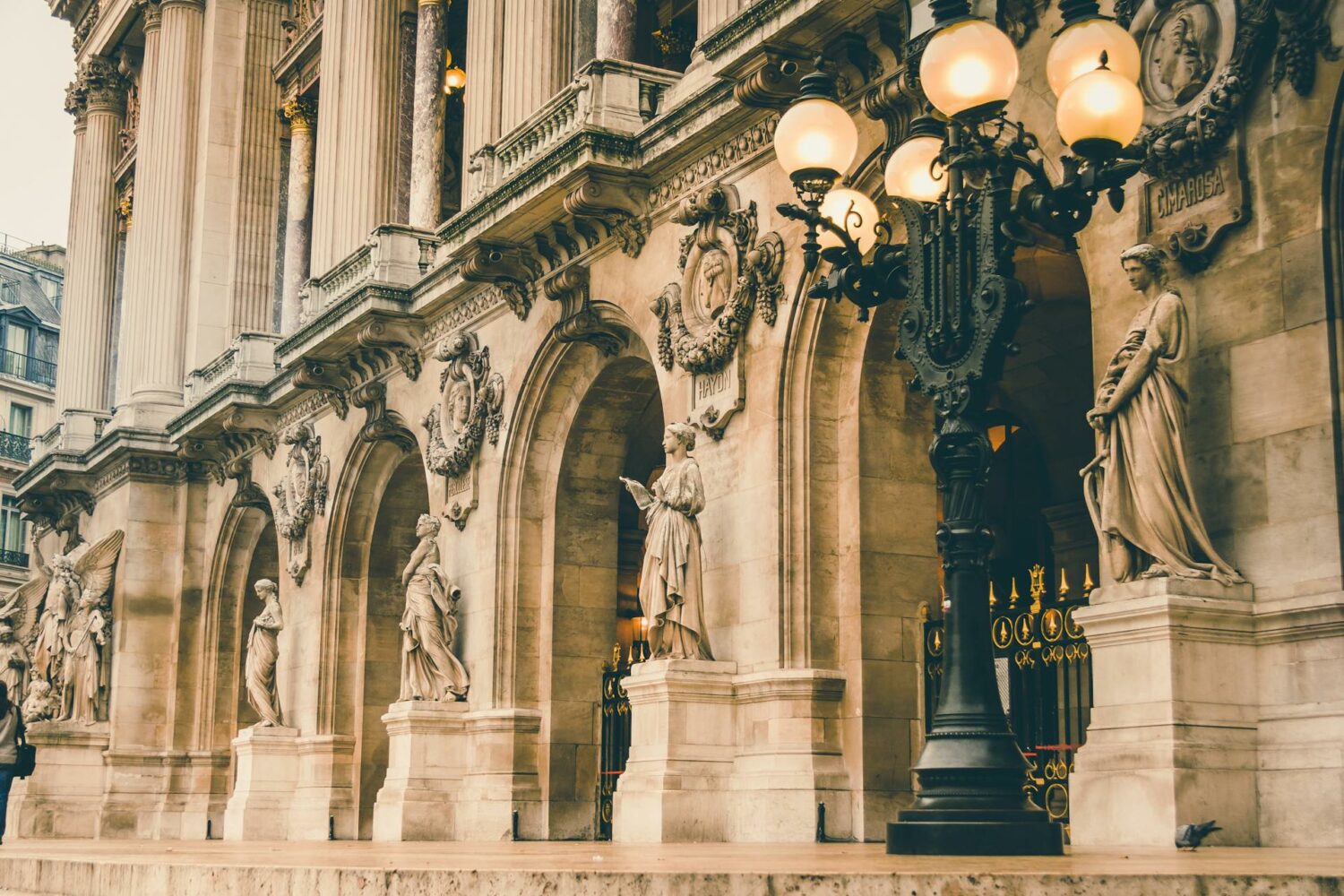
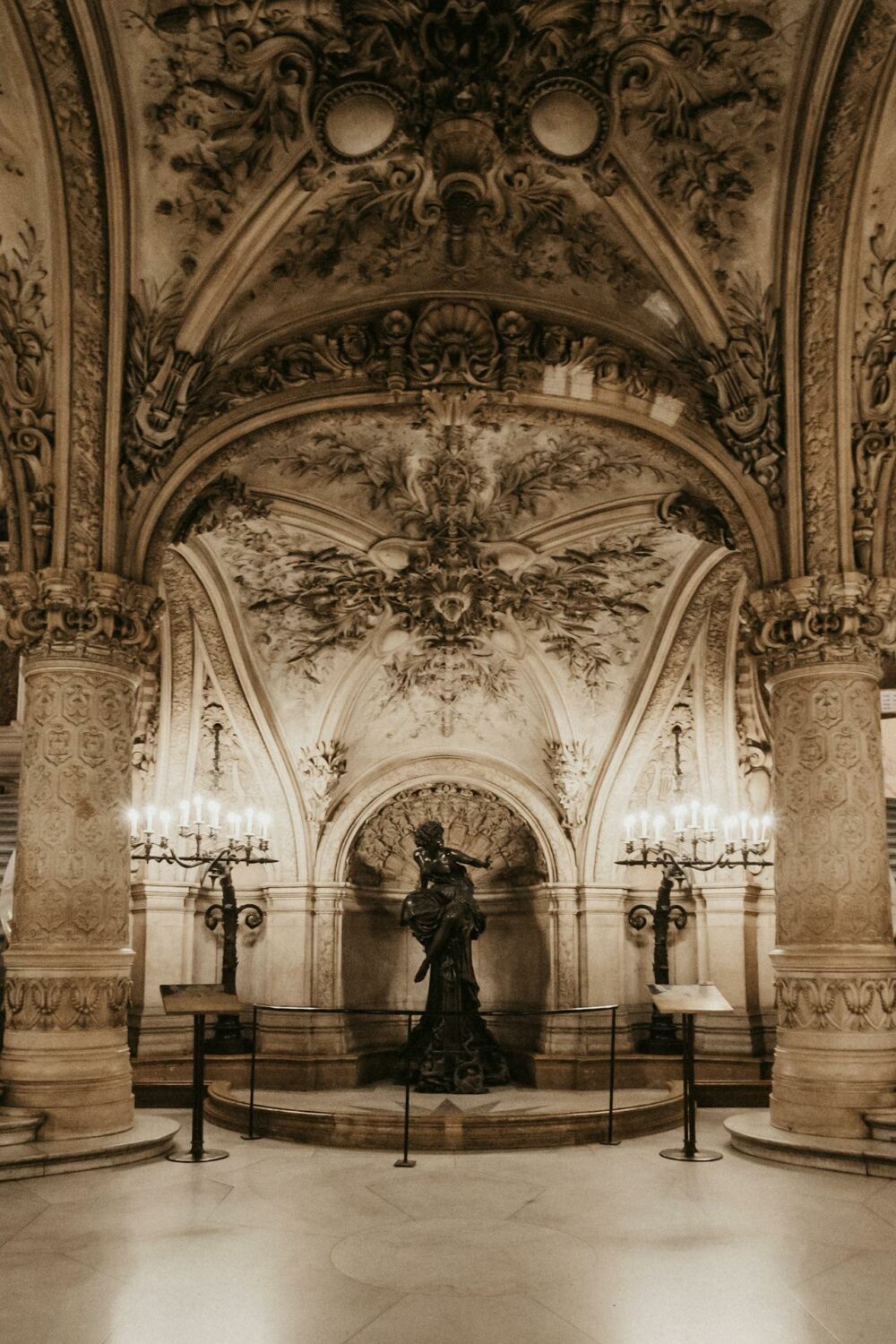
Lire également :
24 April 2025
Cycling Through Paris: An Urban Odyssey
23 December 2024
Paris by Night: Unveiling the McLaren 750S Magic
13 December 2024
Place Vendôme: The Louis Vuitton Carousel
28 November 2024
The Hôtel de Ville: Symbol of Resistance and Renewal
28 November 2024
Palais Galliera Presents: Fashion in Motion
25 November 2024
The Canal Saint-Martin: Memories Between Waters and Reveries
25 November 2024
The Poetry of Chaos: Montparnasse 1895
25 November 2024
The Church of La Madeleine
22 November 2024
The Magic of Paris in the Snow
22 November 2024
Fine Arts Paris: Under the Glass Dome of the Grand Palais
19 November 2024
The Passe-Muraille of Marcel Aymé
19 November 2024
Renoir : The Bal du moulin de la Galette
19 November 2024
The Enchanted Staircase of Gustave Moreau
18 November 2024
Au Consulat: The Soul of Montmartre Through the Ages
18 November 2024
La Samaritaine : Memory and Modernity
18 November 2024
Au Rocher de Cancale
14 November 2024
Monet : Boulevard des Capucines
13 November 2024
Notre-Dame de Paris: Chronicles of a Timeless Sentinel
13 November 2024
Echoes of Knowledge: The Institut de France
12 November 2024
The Grand Parisian Fashion Show: Upcoming Fashion Week Dates
12 November 2024
The Spirit of Liberty: Legends of the Bastille
12 November 2024
The Ceiling of the Opéra Garnier by Marc Chagall
12 November 2024
he Green Fermob Chairs: Memories from Parisian Parks
12 November 2024
The Esplanade of Trocadéro: A Window onto the Eiffel Tower
12 November 2024
The Angels of the Opéra Garnier: Guardians of Beauty
12 November 2024
George V: A Palace of Beauty and Tranquility
12 November 2024
Practical Guide: Taxis in Paris
12 November 2024
The Palais du Luxembourg: From Royal Residence to Senate Seat
12 November 2024
Plan of Paris 1676
11 November 2024
A Haven of Peace in the Heart of Paris: The Île Saint-Louis
11 November 2024
The Fountains of Place de la Concorde
11 November 2024
The Buren Columns: A Contemporary Dialogue with the Palais-Royal
11 November 2024
The Conciergerie of Paris
11 November 2024
The Véro-Dodat Gallery in Paris
11 November 2024
The Seine: The Elegant Lifeline of Paris
11 November 2024
The Booksellers of the Seine: Guardians of Dreams and Memories
11 November 2024
The Louis Vuitton Foundation: A Symphony of Glass and Light
11 November 2024
The Bir-Hakeim Bridge: A Symphony of Iron and Light
11 November 2024
Galeries Lafayette: Chronicles of Luxury and Memories
11 November 2024
The Sainte-Chapelle: Chronicles of Light and Mystery
9 November 2024
Wrapped Memories: Christo’s Arc de Triomphe
7 November 2024
The Moulin Rouge: A Parisian Nocturnal Epic
7 November 2024
Psyche Revived: A Journey Through Art and Love
7 November 2024
The Louvre: Between Fortress and Patronage
5 November 2024
Through the Veils of Creation: CHANEL and the Paris Opera
5 November 2024
Victory of Samothrace: Eternal Triumph at the Louvre
5 November 2024
The Napoleonic Legacy: The History of the Arc de Triomphe
5 November 2024
The Sacré-Cœur: A Story of Faith and Beauty
5 November 2024
The Gare d'Orsay: A Journey Through Time and Art
5 November 2024
The Louvre Pyramid: Symbol of Architectural Boldness
5 November 2024
The Pantheon: A Republican Sanctuary in the Heart of Paris
5 November 2024
Baron Haussmann: Architect of Parisian Metamorphosis
5 November 2024
The History of Place de la République: A Parisian Evocation
5 November 2024
The History of the Trocadéro: A Parisian Memory
5 November 2024
The History of the Bois de Boulogne: A Parisian Reminiscence
5 November 2024
The History of the Eiffel Tower: A Memory of Iron and Light
5 November 2024
The History of Place Dauphine: A Parisian Evocation
5 November 2024
The History of the Pont Neuf: A Parisian Reminiscence
29 May 2019
Jean-Paul Sartre
29 May 2019
The Yves Saint Laurent Museum in Paris
28 May 2019
Geneviève Grad
25 May 2019
L’exposition universelle de 1900
23 May 2019
On the Boat by Claude Mone
13 January 2019
Last Year at Marienbad: Between Dream and Reality
10 September 2018
Degas’ Dancers: A Reflection on the Ephemeral and the Timeless
29 May 2018
Gucci’s “Paris 68” Campaign
8 February 2018
Claude Monet: Impression, Sunrise
10 December 2017
The Philharmonie de Paris: Modern Harmony and Musical Heritage
20 November 2017
Louis Vuitton Vendôme by Peter Marino
3 August 2017
The 1924 Summer Olympics in Paris
20 July 2017
The Crillon Hotel in Paris
17 July 2017
La fondation Brigitte Bardot
29 June 2017
Molitor: The Dawn of the Bikini in Paris
21 June 2017
The History of the Morris Columns in Paris
21 June 2017
De Fursac: The Quintessence of Parisian Suits
21 June 2017
Molitor: Paris’ Timeless Oasis
20 June 2017
The Dome of Les Invalides in Paris
23 May 2017
The Equestrian Statue of Joan of Arc
22 May 2017
The “Collier de Chien” Bracelet by Hermès
29 April 2017
Henri de Toulouse-Lautrec : Le bal au Moulin Rouge
23 April 2017
The History of “Fluctuat nec mergitur” in Paris
23 March 2017
The Museum of Modern Art in Paris
21 January 2017
The Bagatelle Park in the Bois de Boulogne
21 January 2017
An Odalisque at the Louvre
21 January 2017




